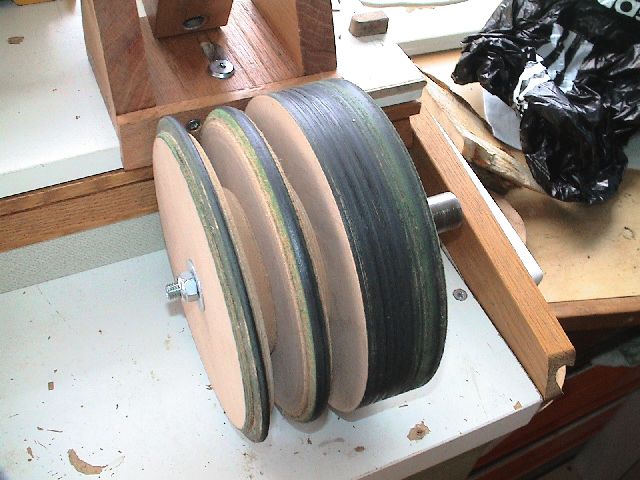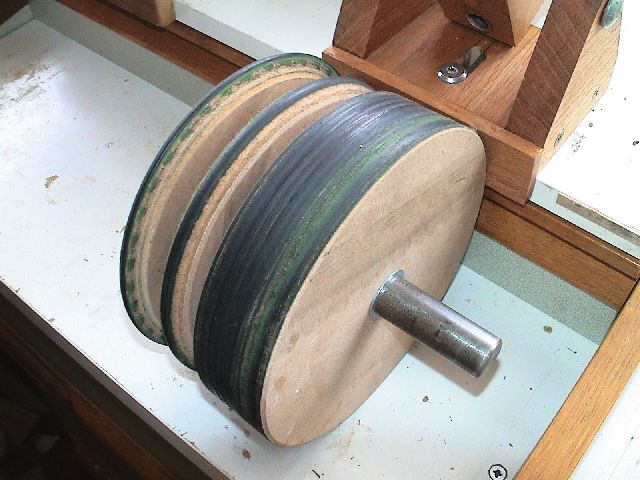HI
This is my set up which I find very easy to use and as the rests etc were made from scrap pieces I had, free, which makes it even better.


The left hand tool rest is set for the angle I use on all my gouges, roughing, spindle and bowl. The right hand rest is set for scrapers and a sharp angle bowl gouge which is very good for cutting across the bottom of deep bowls.
On the outside of each wheel you will see a thin piece of wood this is the Reg Slack sharpening guide. This is cut to the shape of the wheel and attached to the side of the grinder using velcro. You then put the tool shaft on the rest and line up the bevel on the stone so it sits properly, with the machine off. You them put a mark on the wood at the same height as the tip of the tool. When you want to sharpen the tool you turn the grinder on, rest the shaft of the tool on the rest, line the tip of the tool up with the correct mark move it over onto the stone and sharpen, it is easier than it sounds. I use this for tools that have different bevel angles to the two set angles such as parting tools, skews etc.
I had a problem keeping a consistent angle on the skews so I came up with this modification.

Again very simple I use a skew angle of 75 degrees so I used a protractor and drew two line on the tool rest. Now when I sharpen a skew I rest the shaft on the bottom edge of the tool rest line up the side with the line, the tip with the mark on the left hand side and sharpen then turn over and do the other side. All in less time than it used to take me to setup the skew ready to sharpen the first side on the Tormek.

It works beautifully and you get a consistent angle quickly and easily, it works for square, oval and round shaft skews.
Hope this helps.
John






































